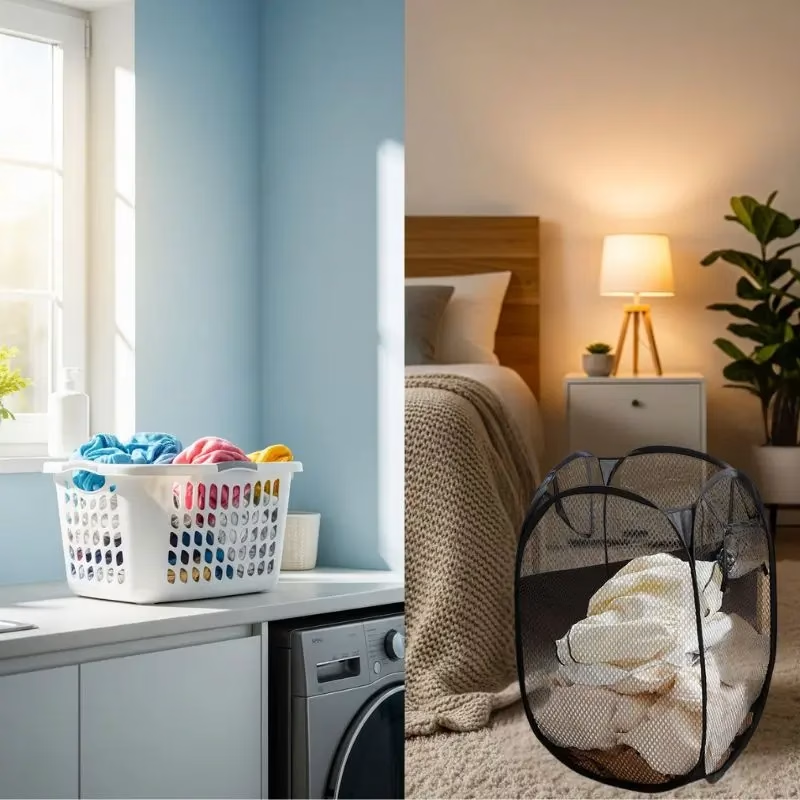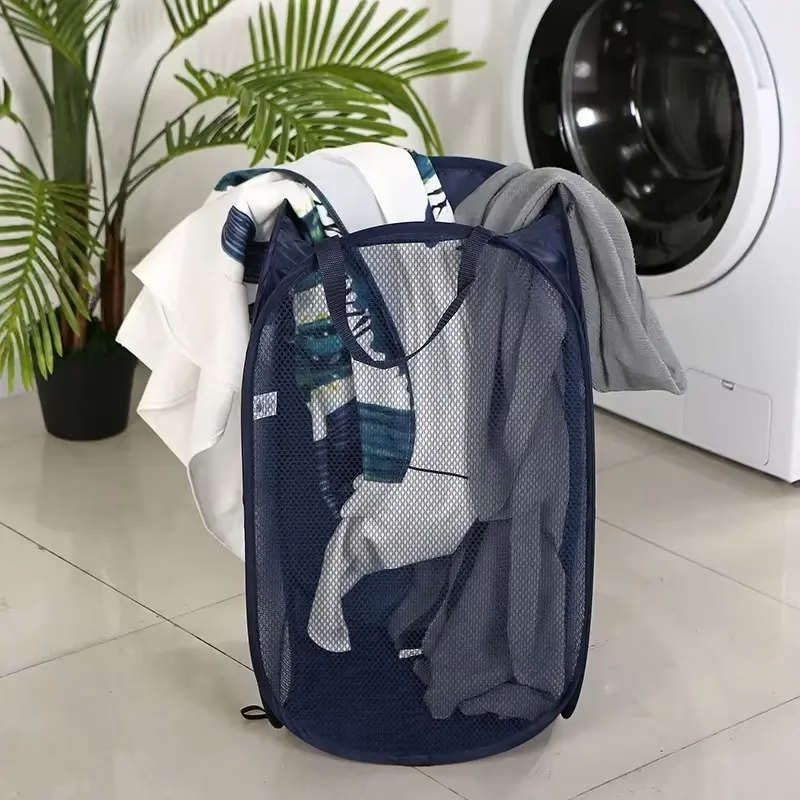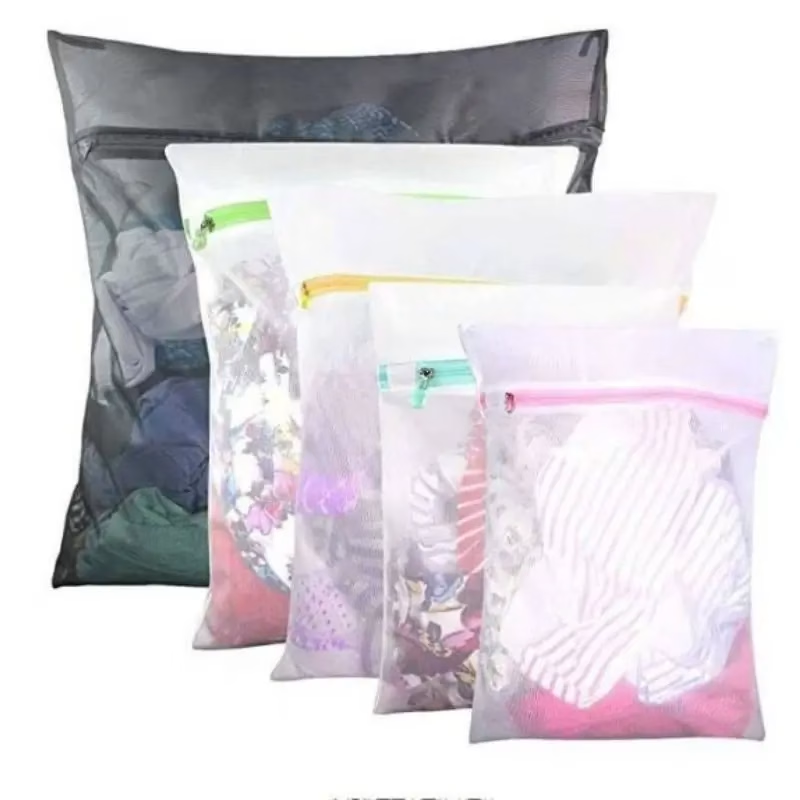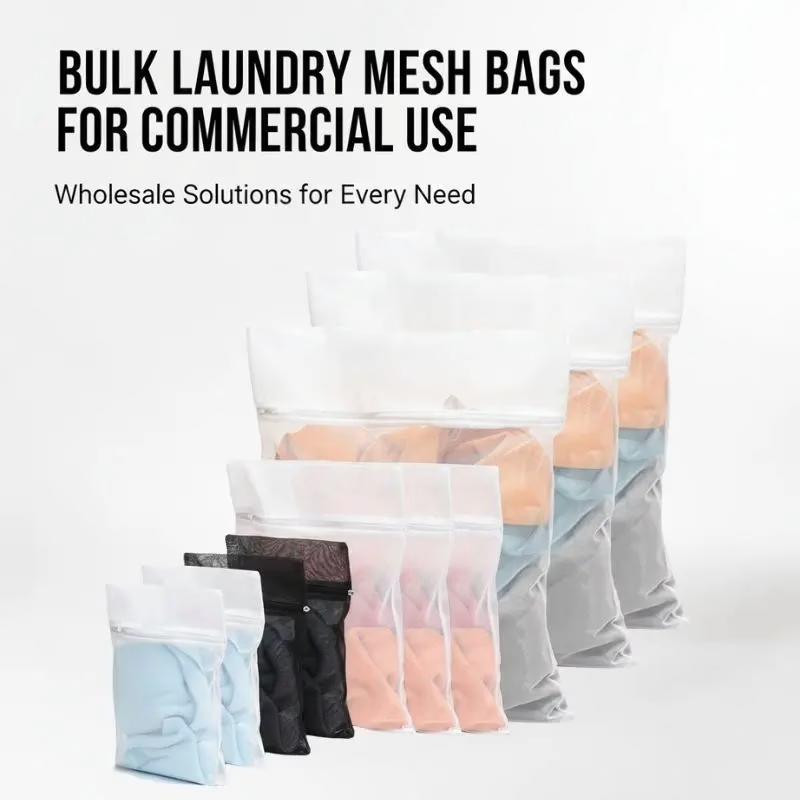Shoes pile up. Towels get damp. Socks vanish. A bad laundry basket makes all that worse. Crack a handle, trap moisture, or snag a sweater, and you’ll feel it every wash day. The right basket saves time, cuts odor, and lasts longer. The big decision most buyers face: plastic or fabric (and yes, mesh laundry hamper styles count). Let’s weigh durability, hygiene, comfort, and cost so you can choose with confidence.
What makes a good laundry basket?
A solid laundry basket is more than a bin. It should be easy to carry, sturdy under load, and friendly to fabrics.
Key factors:
-
Structure: Holds shape when full. No warping.
-
Handles: Strong, smooth, and comfortable in one hand or two.
-
Airflow: Reduces moisture and odor—especially for towels and gym gear.
-
Weight: Light enough to carry up stairs.
-
Cleanability: Wipes down fast. Dries fast.
-
Capacity: Fits your laundry cycles and machine size.
When plastic shines: rigid walls, quick wipe-down, low price.
When fabric shines: lighter carry, better airflow, collapsible storage.
When mesh wins: maximum ventilation with gentle surfaces.

Plastic laundry hamper basket: pros, cons, best uses
Plastic baskets are everywhere for a reason. They’re simple, strong, and easy to sanitize.
Pros
-
Rigid and stackable: Holds shape under heavy loads.
-
Easy cleaning: Wipe or hose down; dries quickly.
-
Hygienic: Solid sides prevent lint drift; smooth surfaces resist mildew.
-
Value: Lower upfront cost; wide availability.
Cons
-
Cracking risk: Cheap plastics can split at corners or handles.
-
Limited airflow: Solid walls trap moisture if clothes sit wet.
-
Comfort: Hard handles can dig into hands with heavy loads.
-
Bulk: Fixed size; storage takes space.
Best uses
-
High-traffic laundries, dorms, and utility rooms.
-
Wet areas where quick wipe-down matters.
-
Users who prefer rigid structure and easy stacking.
Tip: Look for thicker walls, rounded rims, and reinforced handle tunnels to reduce stress fractures.
Fabric & mesh laundry basket: pros, cons, best uses
Fabric baskets range from canvas totes to collapsible pop-ups. Add mesh, and airflow jumps.
Pros
-
Lightweight carry: Soft sides and fabric handles feel gentle on hands.
-
Airflow: A mesh laundry basket or mesh laundry hamper vents moisture and heat.
-
Gentle on clothing: Smooth liners reduce snags and abrasion.
-
Storage: Collapses flat; easy to tuck away.
Cons
-
Shape: Can sag or tip if frames are weak.
-
Cleaning: Needs a wipe-down or hand wash; drying takes time.
-
Wear: Fabric can tear; frames can bend if overloaded.
-
Odor risk: If left damp and unvented.
Best uses
-
Bedrooms, kids’ rooms, and small spaces.
-
Gym gear or towels that benefit from airflow.
-
Multi-unit housing where collapsible storage helps.
Tip: Choose reinforced seams, sturdy frames, and coated or double-layer mesh for longer life.
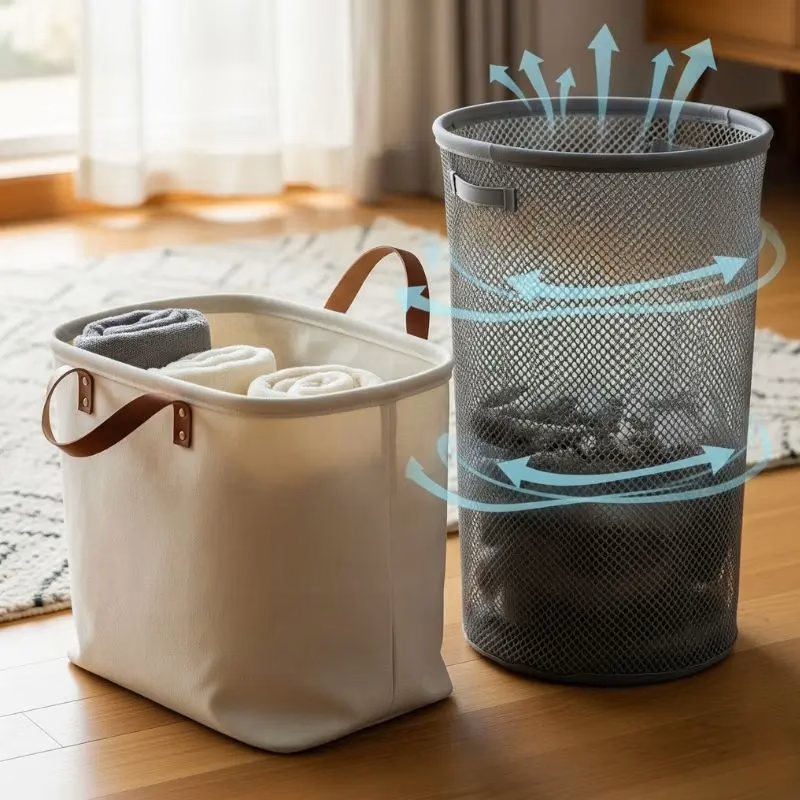
Feature comparison: plastic vs fabric vs mesh
Here’s a quick way to compare materials and designs.
| Feature | Plastic Laundry Hamper Basket | Fabric Canvas Basket | Mesh Laundry Basket / Mesh Laundry Hamper |
|---|---|---|---|
| Structure | Rigid; stackable | Semi-rigid or soft | Flexible; framed or pop-up |
| Airflow | Low–Medium (vents help) | Medium | High |
| Cleanability | Excellent (wipe) | Good (wipe/spot clean) | Good (rinse/air dry) |
| Durability | High if thick-wall; risk of cracking on cheap models | Medium; seams matter | Medium–High; mesh density and frame quality matter |
| Comfort | Hard handles; can dig in | Soft handles; easy carry | Very light; soft handles |
| Storage | Bulky | Collapsible | Collapsible |
| Hygiene | Good but can trap moisture | Good with liner | Very good due to ventilation |
| Price Range | Low–Medium | Medium | Low–Medium |
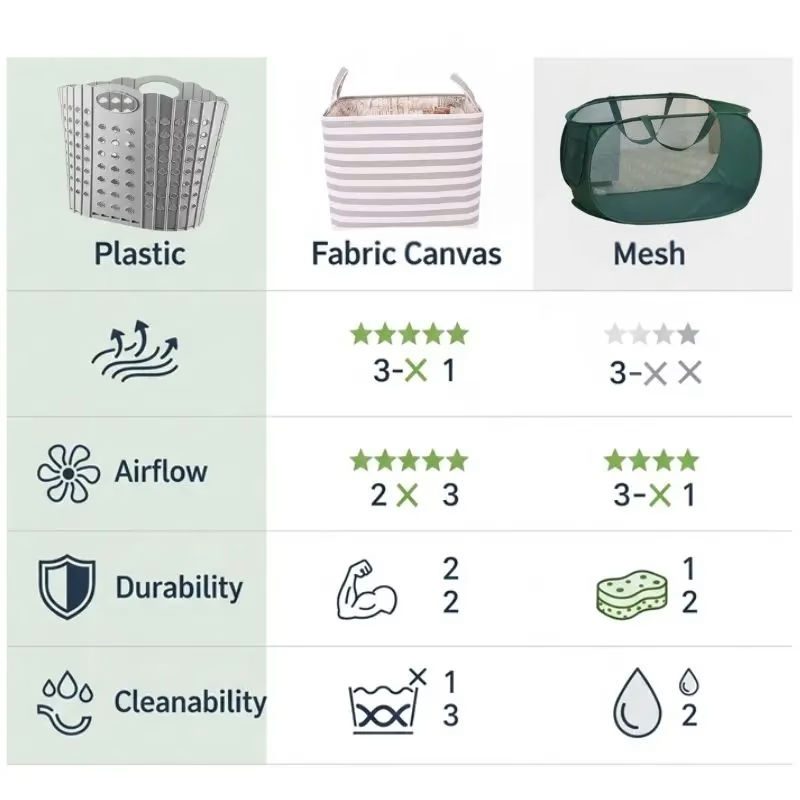
How to choose a laundry basket by environment
Different spaces need different bins. Here’s a quick map.
Apartments and dorms
-
Go light and collapsible. A mesh laundry basket folds small and vents odor.
-
Add a drawstring to stop socks from falling out in elevators.
Family homes
-
Mix types: plastic in the laundry room; fabric hampers in bedrooms.
-
Use a divided laundry hamper basket (lights/darks) to speed sorting.
Hospitality and rental units
-
Favor rigid plastic for easy sanitation and long life.
-
Provide mesh pop-ups in guest rooms for breathable storage.
Gyms and locker rooms
-
Mesh rules for towels and sportswear. Fast airflow means less odor.
-
Look for antimicrobial linings if available.

Hygiene and airflow: why mesh matters
Moisture feeds odor. Airflow slows it down. A mesh laundry hamper lets warm air move, which helps damp towels and gym gear breathe until washing. Plastic with vent holes helps, but full mesh excels when odor control is a priority.
Good practices
-
Don’t let wet items sit more than a day.
-
Keep baskets off the floor to avoid puddles.
-
Wipe plastic after messy loads.
-
For fabric, allow full drying between uses.
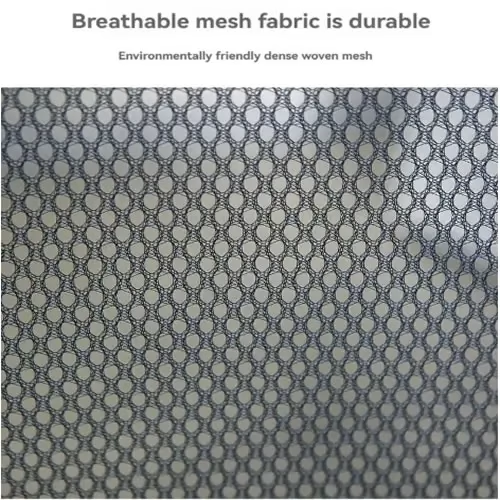
Cost of ownership: buy once, buy smart
Upfront price is only part of the picture. Think about breakage, cleaning time, and storage.
| Cost Factor | Plastic Laundry Hamper Basket | Fabric Canvas Basket | Mesh Laundry Basket |
|---|---|---|---|
| Purchase Price | Low–Medium | Medium | Low–Medium |
| Expected Lifespan | 2–5 years (quality-dependent) | 1–3 years | 1–3 years (more with reinforced seams) |
| Failure Mode | Handle cracks, rim splits | Seam tears, frame bend | Mesh tears, frame fatigue |
| Cleaning Time | Very low | Low–Medium | Low |
| Storage Savings | Low | High | High |
| Best Value When | Heavy loads, frequent cleaning | Aesthetic and light-to-medium loads | Odor control and tight storage |
TCO tip: If users drag baskets or overload often, invest in thicker plastic or reinforced mesh frames. Replacement cycles drop, and complaints go down.
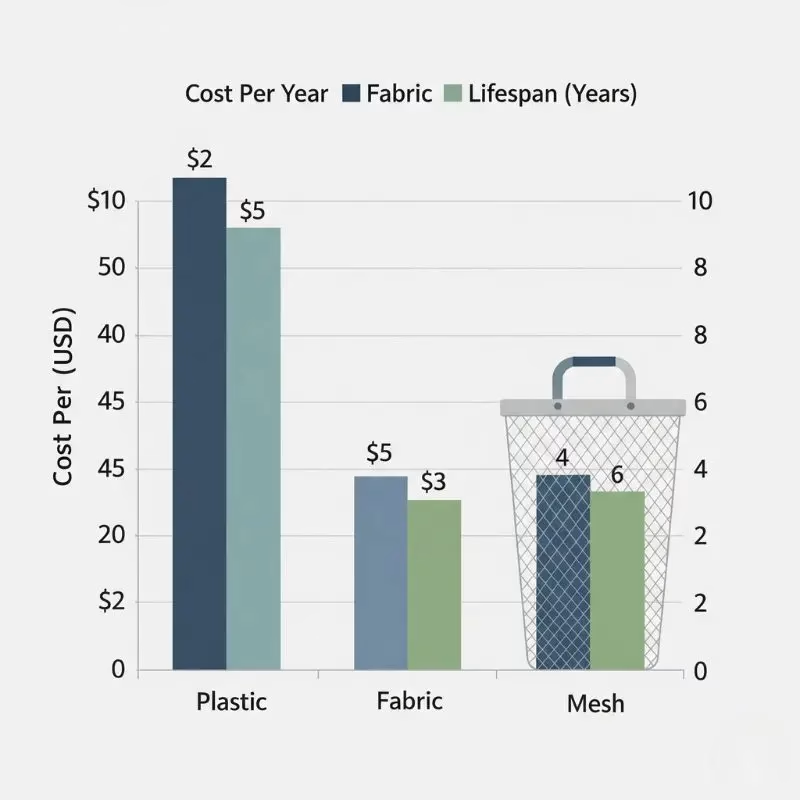
Sizing and ergonomics: capacity, handles, and carry
Capacity is usually listed in liters or bushels. Bigger isn’t always better—heavy loads strain wrists and backs.
What to look for
-
Capacity match: 40–60L for most households; larger for family rooms.
-
Handle design: Rounded, reinforced, and smooth edges.
-
Height vs stairs: Tall hampers can hit knees on steps.
-
Lids: Good for sight lines and odor, but reduce ventilation.
-
Dividers: Built-in sorting speeds up wash day.
Pro move: Test-carry a full load up a flight of stairs. If your grip hurts, choose softer handles or a fabric tote with padded straps.
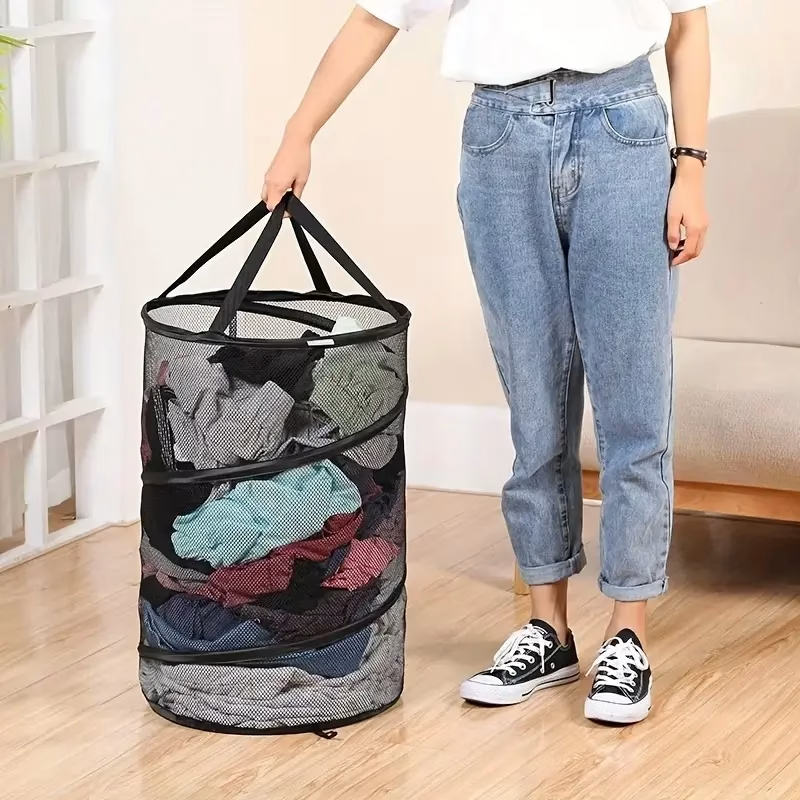
Sustainability: materials, recycling, and reuse
Plastic baskets can be recyclable depending on resin and local rules. Fabric and mesh often include polyester or nylon, which are durable but not always recycled.
Ways to go greener
-
Buy durable models to cut replacements.
-
Choose recyclable plastics when available.
-
Pick mesh with coated steel frames that last.
-
Repair small tears with patches or stitching.
-
Use cold or warm wash cycles to save energy (when laundering the fabric liner).
See EPA resources for material considerations (see EPA facts on plastics).
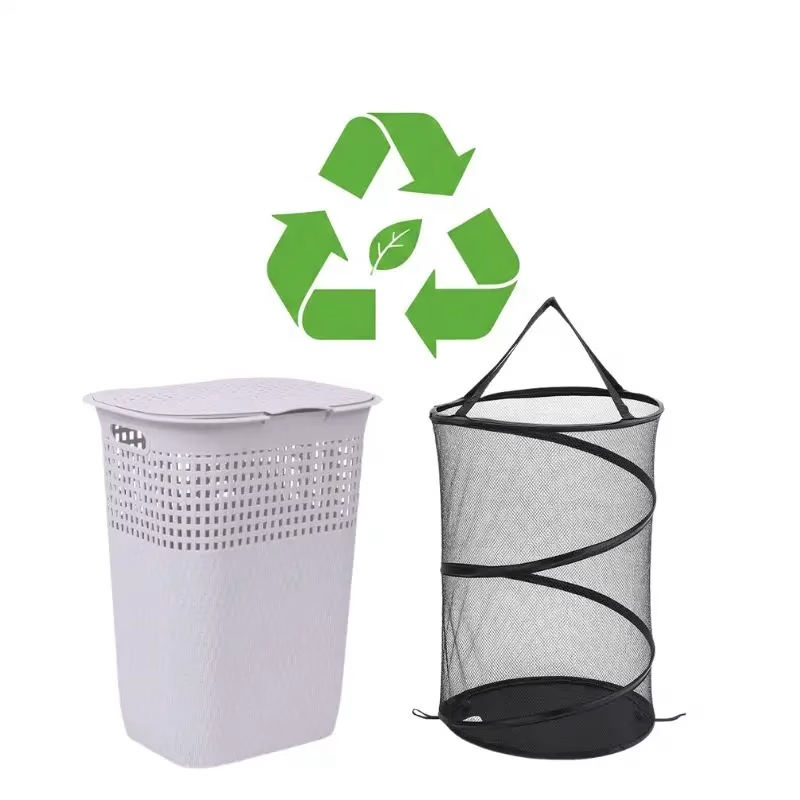
Industry buyer’s checklist and OEM options
Buying for a property, facility, or store brand? Use this checklist.
Materials and build
-
Plastic: thicker walls, UV-stable color, rounded rims, strong handle tunnels.
-
Fabric: heavy canvas or oxford, reinforced seams, lining to resist moisture.
-
Mesh: double-layer panels, coated steel frame, stitched binding.
Specs to confirm
-
Load rating (kg or lb).
-
Handle pull strength.
-
Frame corrosion resistance.
-
Colorfastness and abrasion resistance.
-
Vent layout (for plastic) or mesh density (for fabric/mesh).
Compliance
-
Ask for documentation for restricted substances and safety. Many buyers reference REACH-like standards. Learn more from ECHA (see REACH information).
Branding & packaging
-
Heat-transfer logos, woven labels, and retail-ready cartons.
-
Clear icons for capacity, ventilation, and care.
About us
Established in 2014, we manufacture laundry baskets, laundry mesh bags, washing bags, storage boxes, and dirty clothes baskets. We supply customers worldwide, including Europe, North America, South America, Korea, and Japan. OEM orders and custom designs are welcome. Our eco-friendly raw materials are selected to pass REACH-related testing.
Explore product families:
-
See our laundry basket range: https://laundrymeshbag.com/products/laundry-basket/
-
Check a mesh fabrication example (zipper, stitching quality): https://laundrymeshbag.com/product-details/mesh-bra-laundry-bag-wholesaler-in-black-zipper/
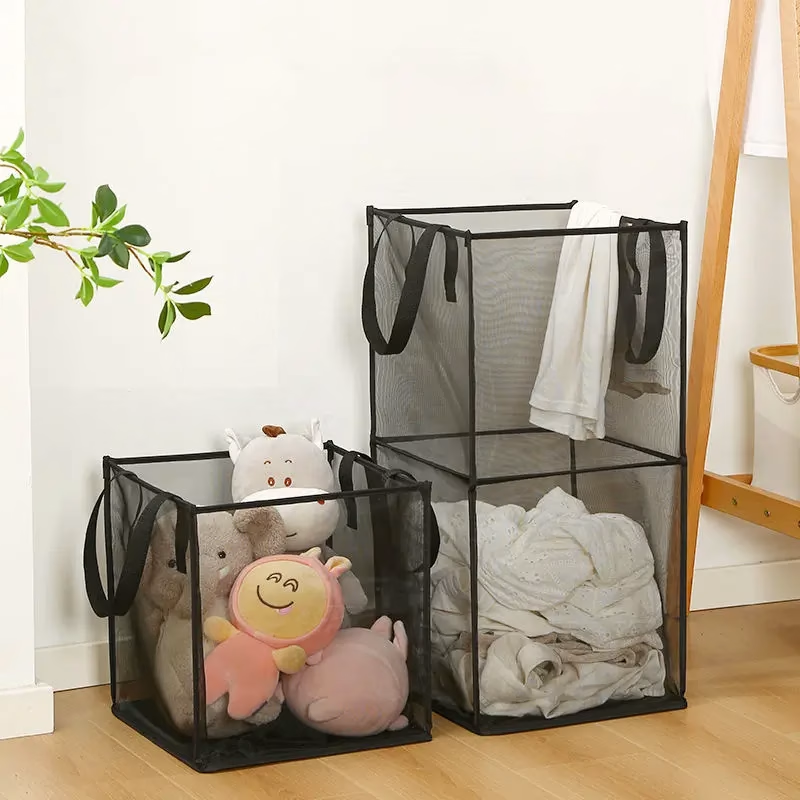
Laundry basket care and hygiene tips
A clean laundry basket keeps clothes fresher and reduces cross-contamination.
Plastic care
-
Wipe with mild detergent and warm water.
-
Disinfect as needed; rinse and dry.
-
Inspect handles for hairline cracks.
Fabric care
-
Spot-clean with gentle soap.
-
Let it dry fully before refilling.
-
Consider removable liners for easy washing.
Mesh care
-
Rinse in the shower after sandy or muddy clothes.
-
Air dry fully to protect the frame and stitching.
-
Store upright to keep shape.
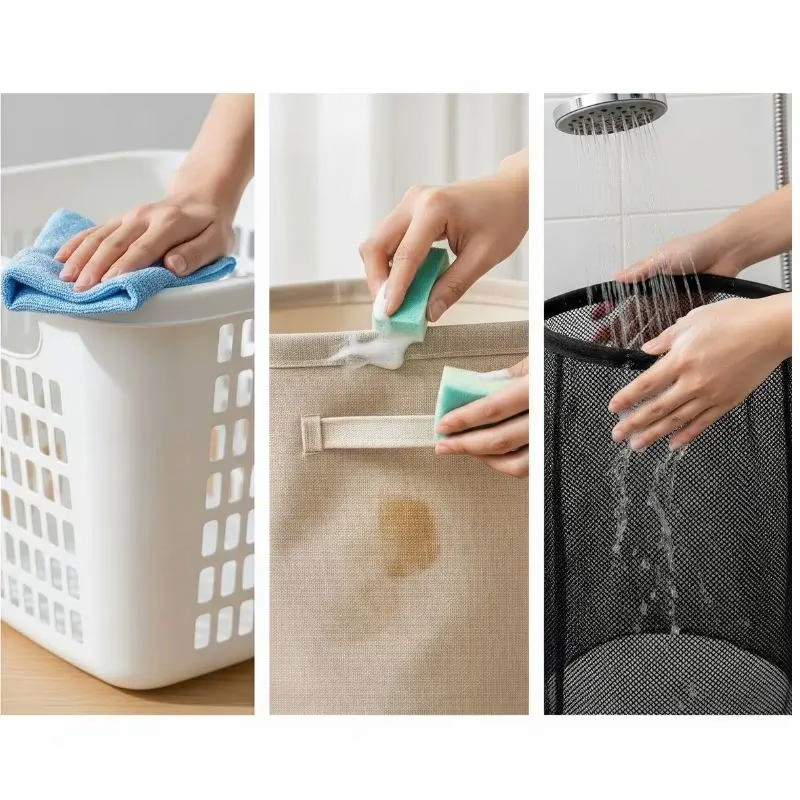
Common mistakes to avoid
-
Overloading: Causes cracks, bent frames, and sore hands.
-
Wet piles in sealed bins: Traps odor and moisture; switch to mesh or ventilated plastic.
-
Sharp edges inside: Snags delicates—line with a smooth bag if needed.
-
Ignoring handle wear: Replace before a break leads to spills.
-
No labeling in shared spaces: Color-code or label to cut mix-ups.
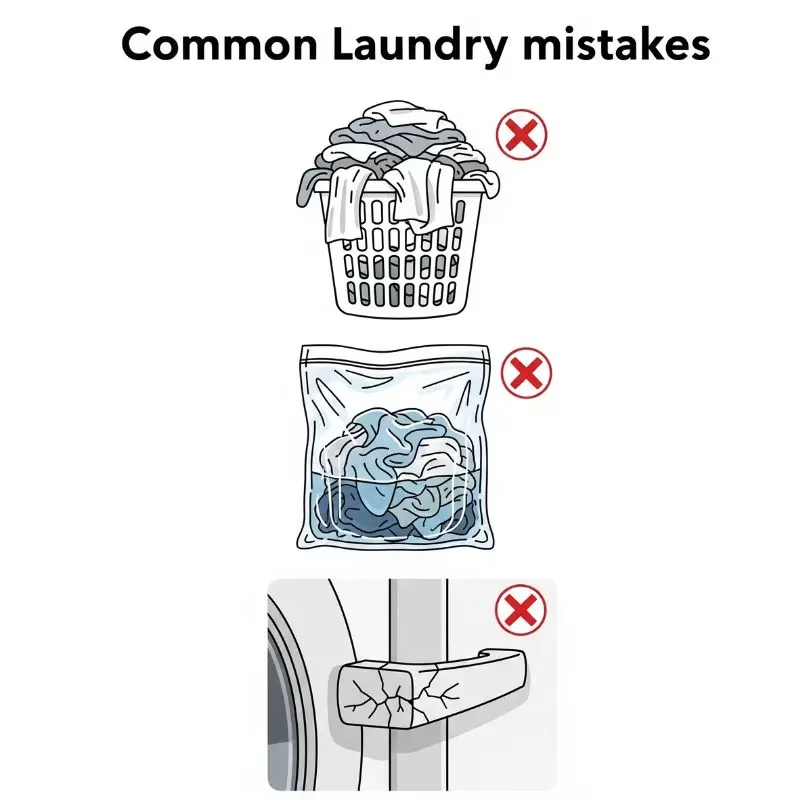
So… plastic or fabric?
Short answer: it depends on your load, space, and hygiene needs.
Choose plastic if you want rigid structure, easy cleaning, and long life under heavy loads.
Choose fabric for a softer look and lighter carry in bedrooms.
Choose mesh when airflow and odor control are key, or if you need collapsible storage.
Many homes and facilities mix types: plastic in the laundry room, mesh or fabric upstairs. That gives you rigid support where you wash and breathable storage where you live.
FAQs for professional decision-makers
1) What load rating should we specify for a standard basket?
Most home baskets handle 8–12 kg comfortably. For facilities, spec at least 12–15 kg with reinforced handles and rims. Ask for pull-test data at weak points.
2) How do we reduce odor complaints in shared spaces?
Choose a mesh laundry basket or ventilated plastic. Post guidance to avoid storing wet loads for more than 24 hours. Set wipe-down routines for plastic models.
3) Can you support OEM branding and packaging?
Yes. We offer heat-transfer logos, woven labels, and retail cartons. We’ll align with your channel and storage requirements.
4) What compliance documents can you provide?
We select eco-friendly raw materials to pass REACH-related tests and can share documentation with your PO. We also support colorfastness and abrasion testing.
5) How should we standardize across multiple properties?
Use a two-tier approach: rigid plastic baskets for back-of-house and laundry rooms; fabric or mesh laundry hamper models for guest or resident rooms. Keep SKUs lean to simplify replenishment.
We’re the original manufacturer, established in 2014, supplying global markets with laundry baskets, mesh bags, and storage products. Need a plastic, fabric, or mesh laundry hamper program with your specs and branding? Request a quote today and let’s build the right basket lineup for your operation.


